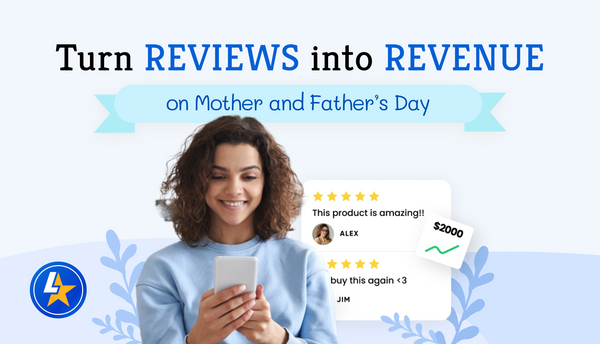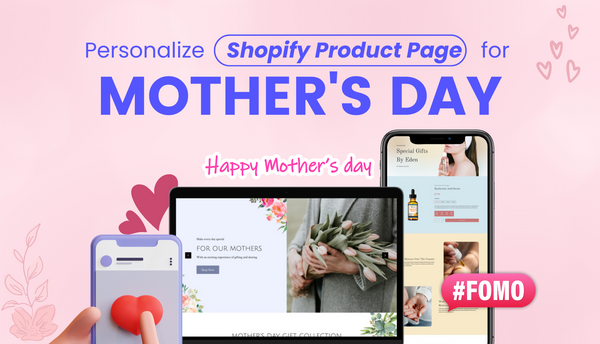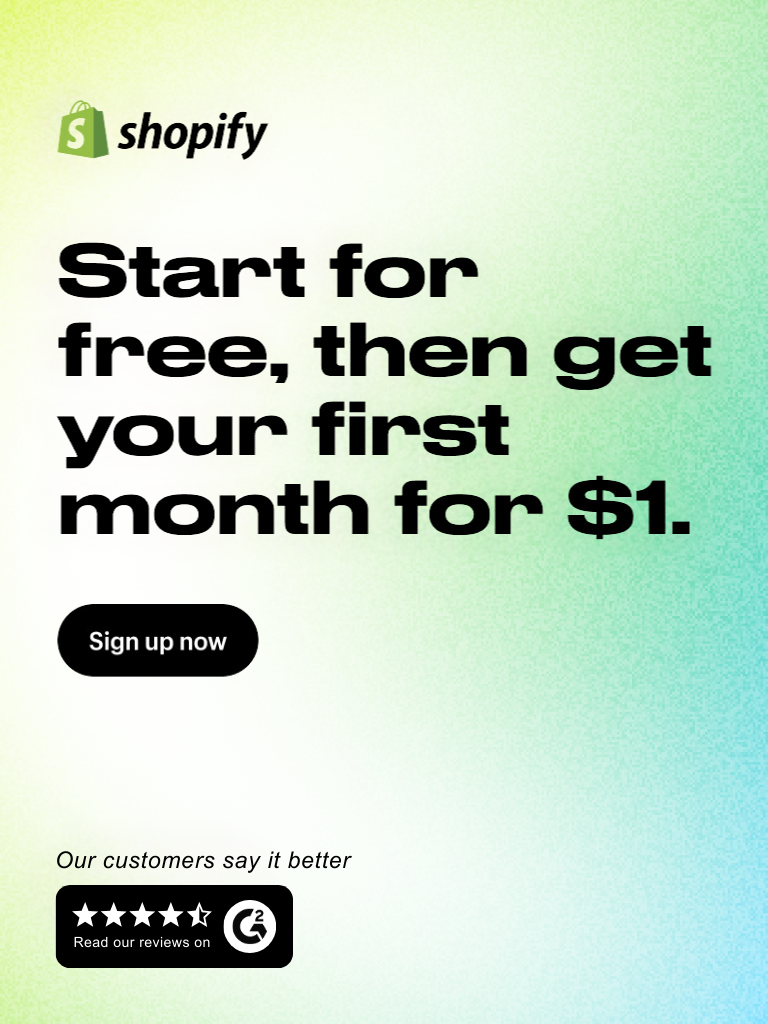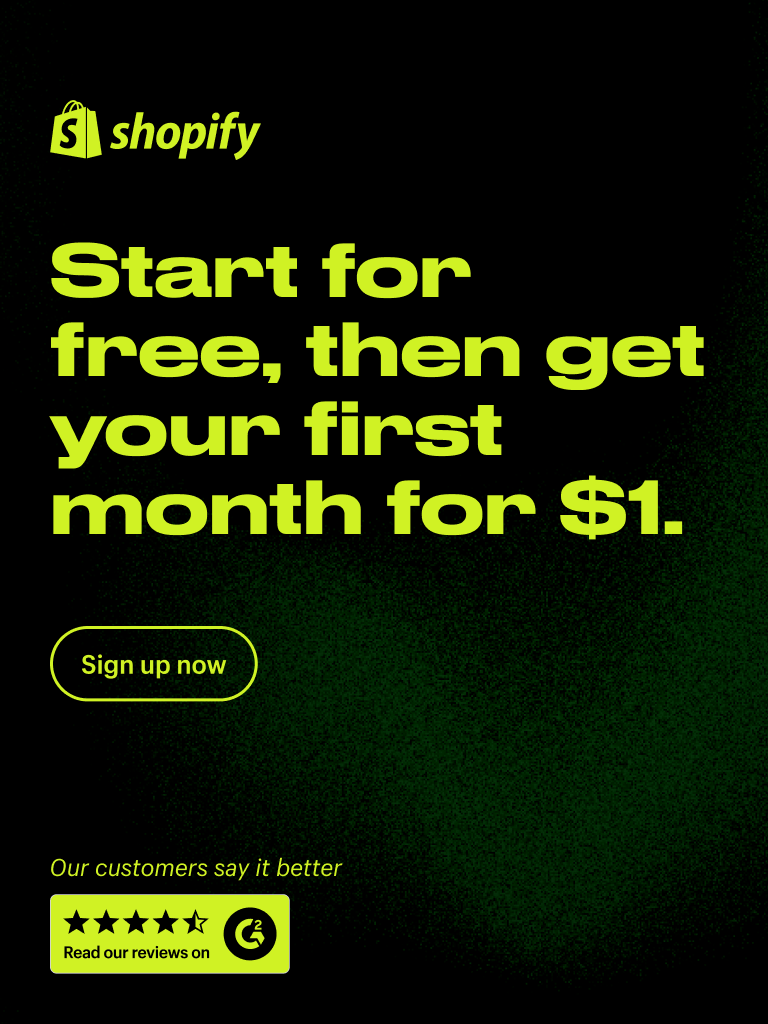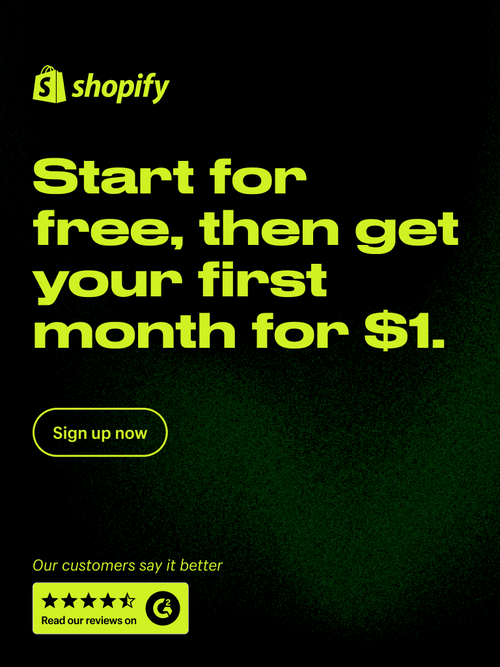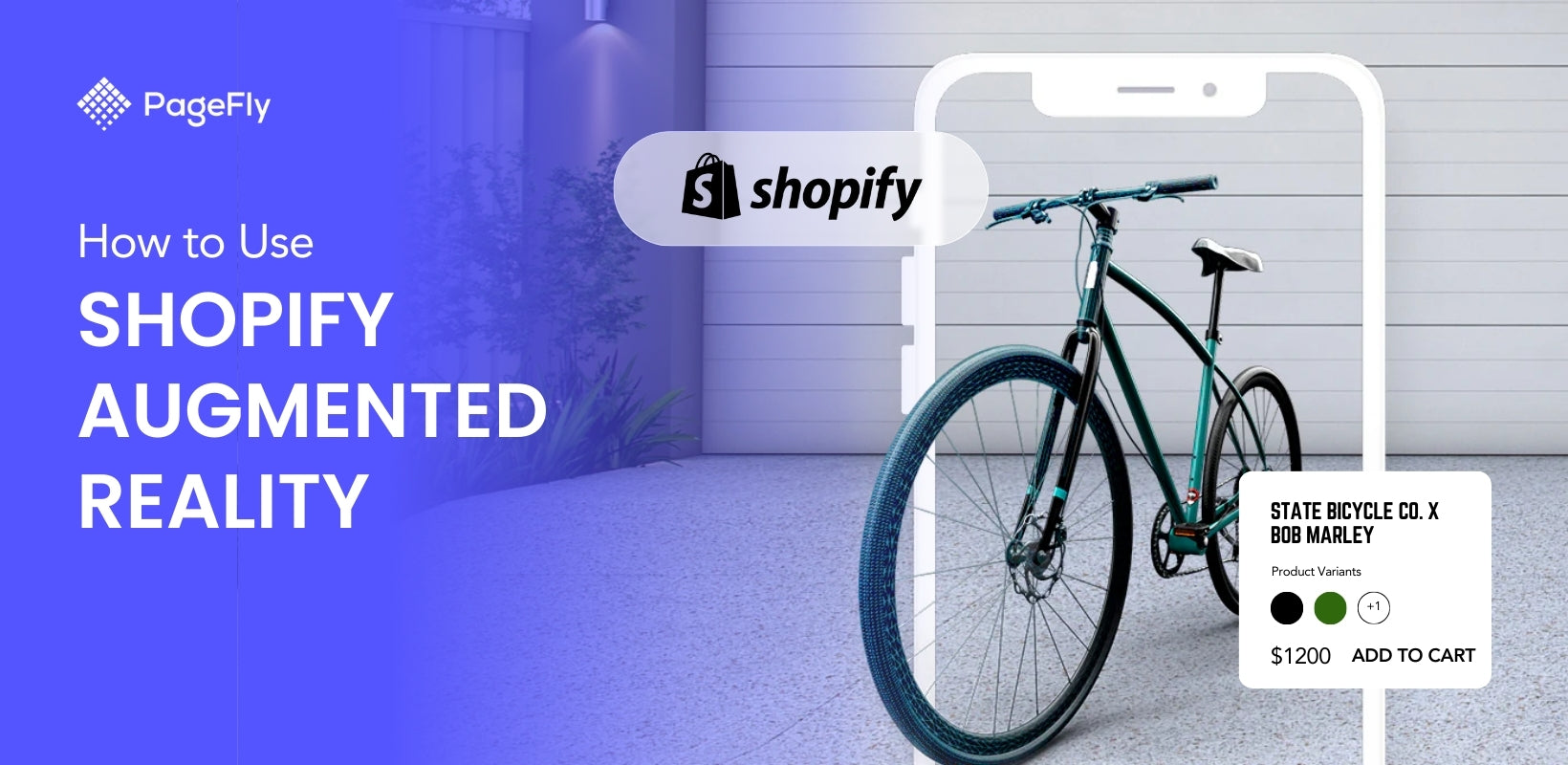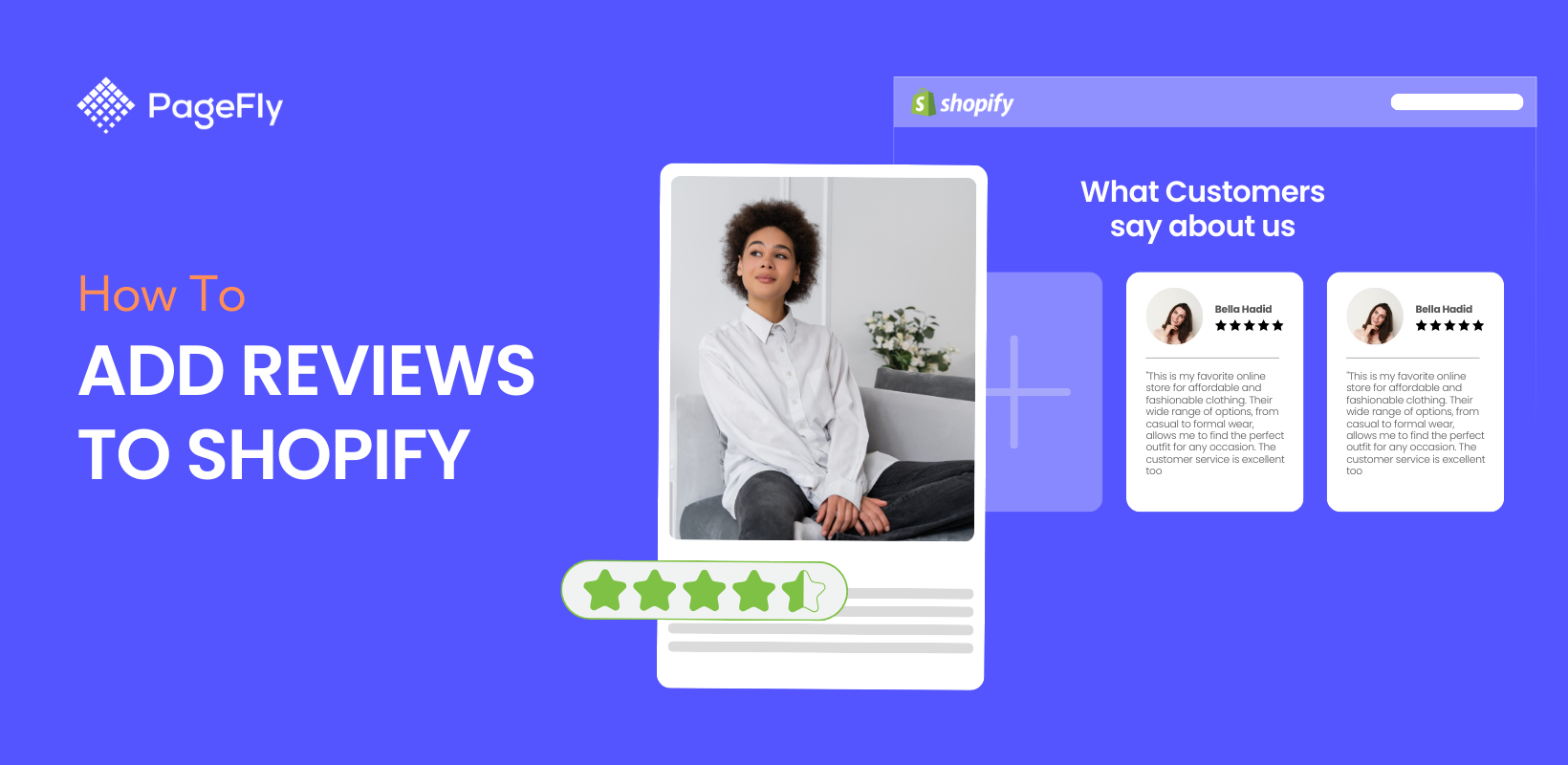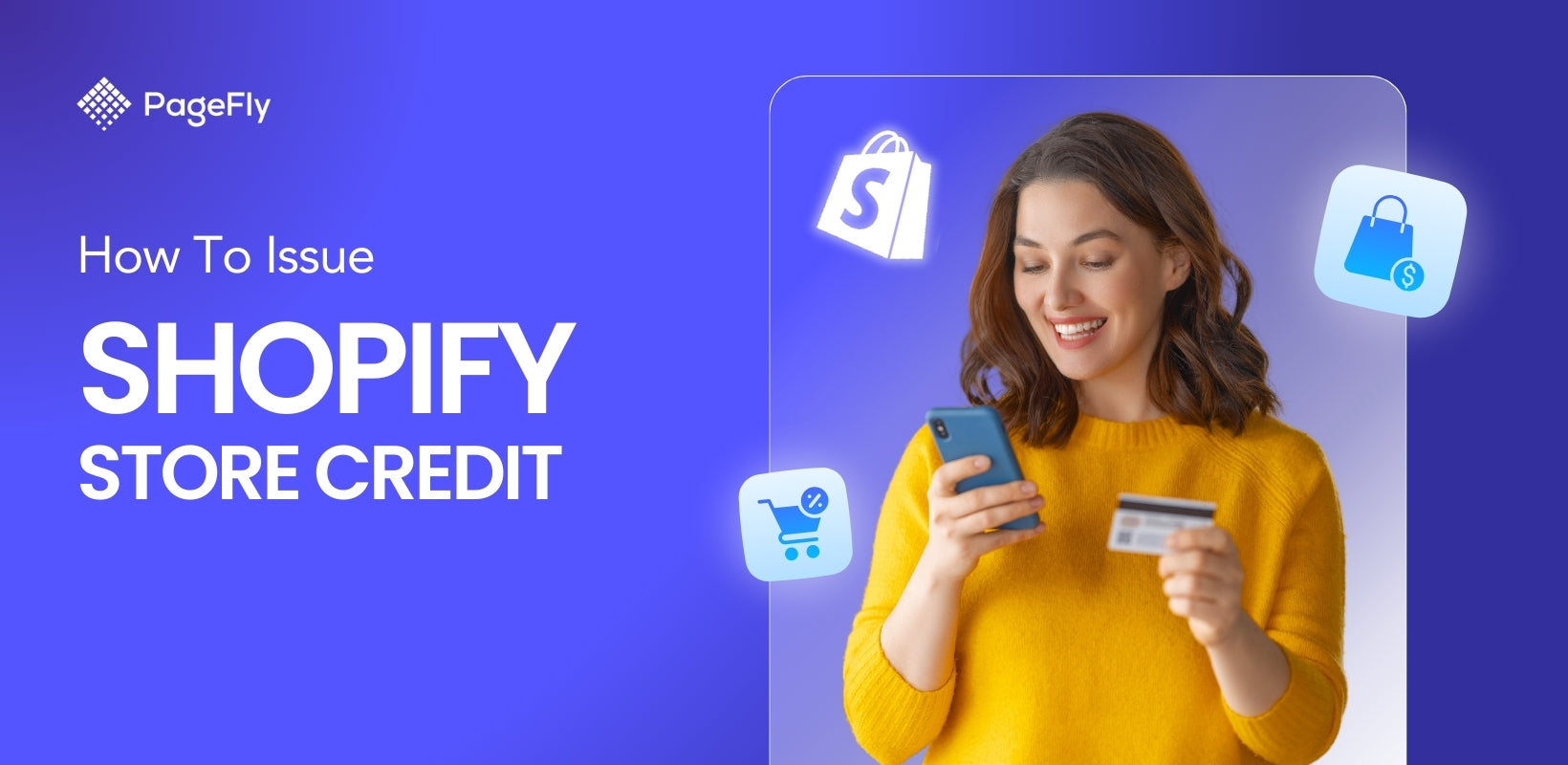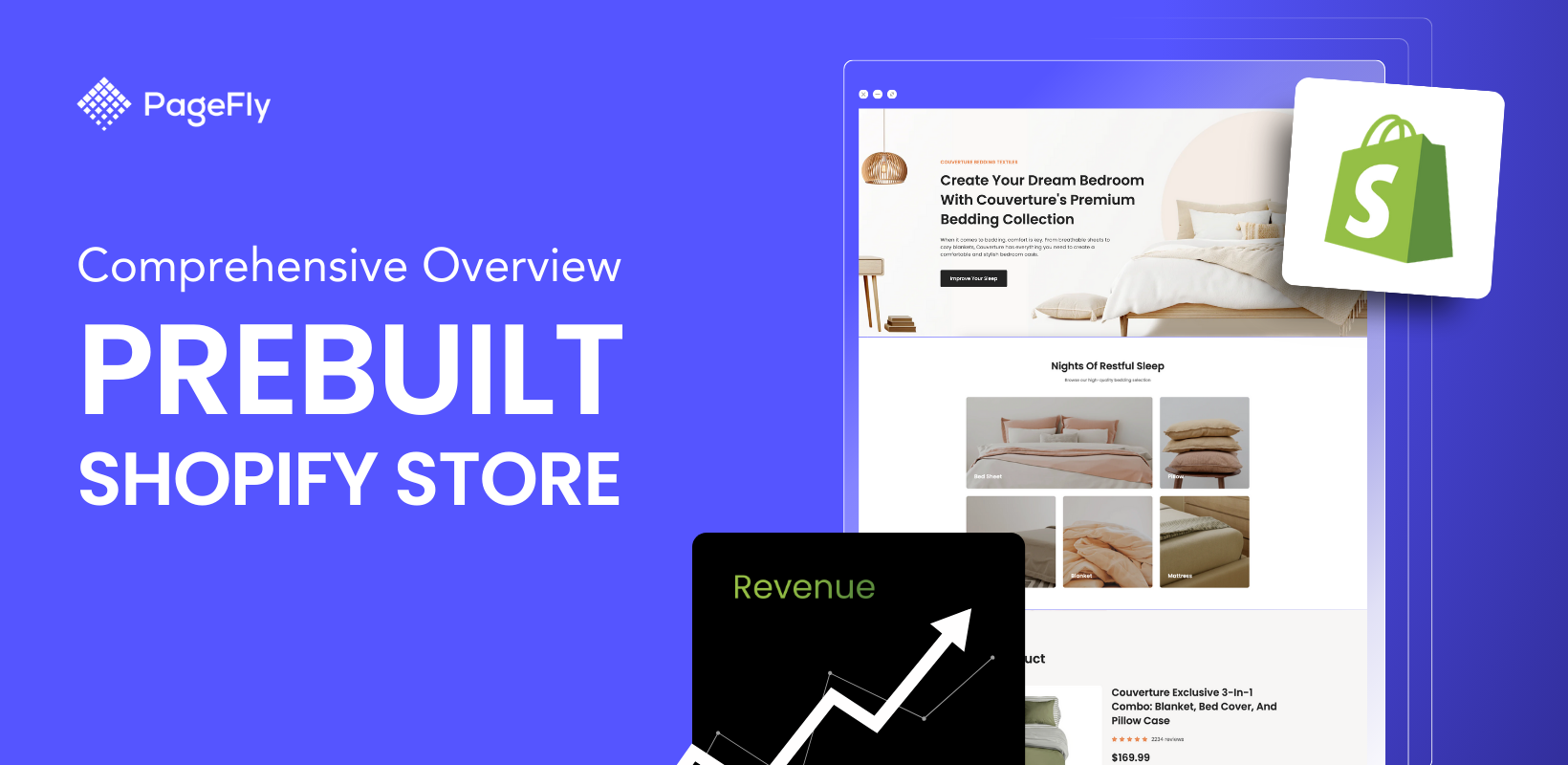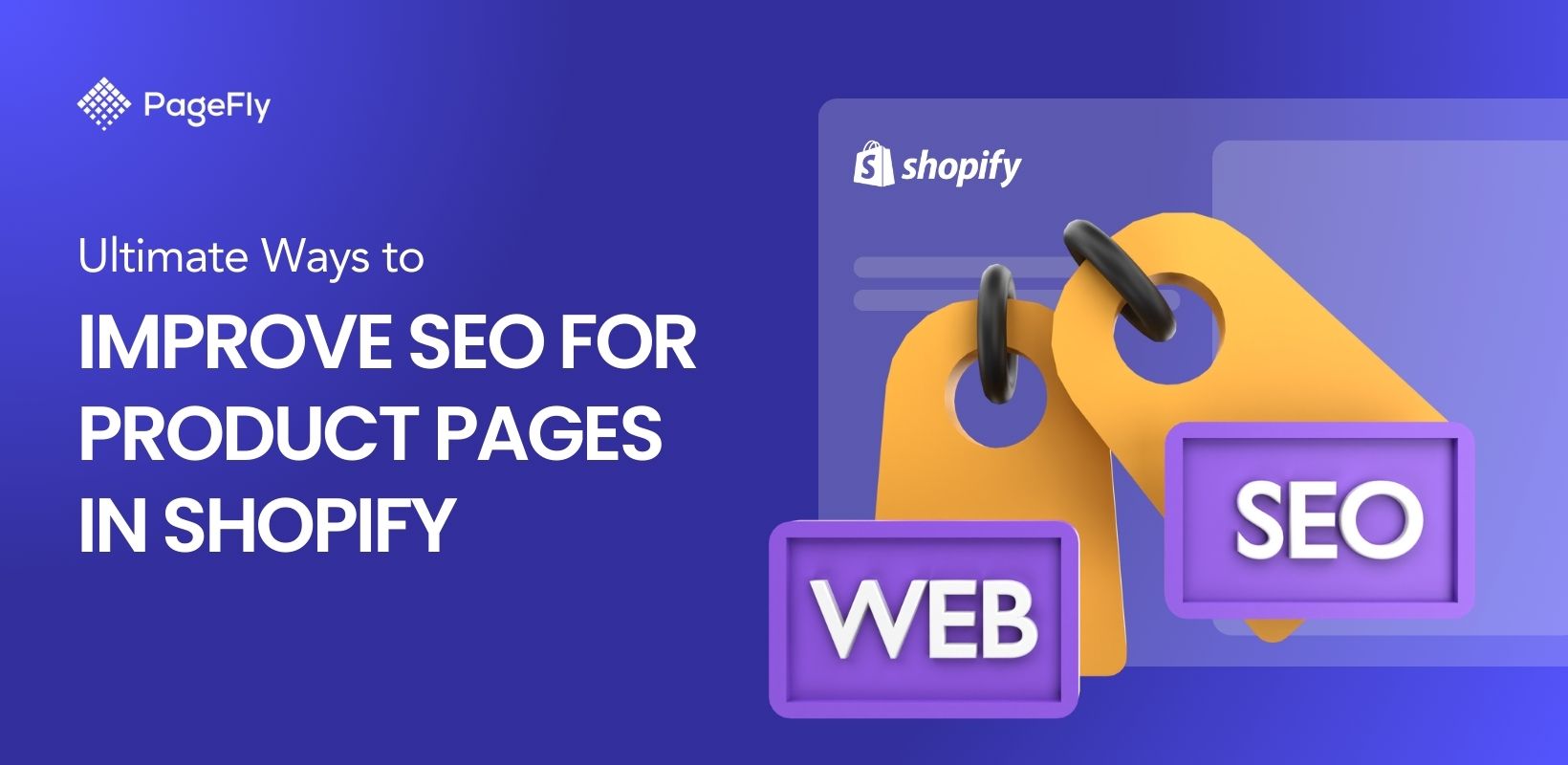Slow growth of your Shopify store isn’t a rare thing. All Shopify store owners face this issue at some point.
It’s either due to a lack of traffic or an extremely low conversion ratio. This blog will tell you the best Shopify marketing strategy 2021 that will help you boost conversions.
After reading this blog, you will have a thorough knowledge of how to bring in visitors, where to promote the Shopify store, and how to convert visitors into buyers.
Outline
- 5 Reasons Why You Are Getting Traffic But No Sales
- Poor Store Navigation
- Niche & Target Audience
- Your Store Is Not Mobile-Optimized
- The Store's Product Page Isn't Great
- There Might Be A Flaw In Your Checkout Process
- 15+ Strategies & Tips To Drive More Sales
- Leverage Search Engine Optimization & Drive Traffic To Your Store
- Make Your Store Load Fast
- Leverage Paid Advertising To Increase Sales Quickly
- Start Email Marketing By Making A List
- Reduce Shopping Cart Abandonment
- Retarget Visitors With Facebook Retargeting Ads
- Keep Personalizing Shopping Experience With Time
- Create A Landing Page That Converts
- Product Page Optimization - Don't Leave This Unattended
- Send Wishlist Reminder Emails To The Right Audience
- Offer Free Shipping To Increase Sales
- Get Shopify Sales With 'Out Of Stock Waitlist"
- Social Proof Will Help You Build Trust
- Increase Sales On Shopify With A/B Testing
- SMS & Web Push Notifications
- Leverage Chatbots For Basic Queries
- Leverage Social Media To Increase Sales
- Make Your Customer Feel Like Insider
- Influencer Marketing Can Be A Powerful Asset To Get Sales
- Don't Let User-Generated Content Go To Waste
- Wrapping Up
I. 5 Reasons Why You Are Getting Traffic But No Sales
01. Poor Store Navigation
As soon as a user lands on your homepage, they look for a menu. According to Hubspot, 38% of visitors (source: hubspot) will stop engaging with your online store if the navigation is poor.This might cost you your business. Your Shopify store menu should stand out, have all the essential elements, and be the first thing a visitor sees.
If your website menu looks like the one below, that is the main reason why you’re getting more traffic but no sales.

The menu above is hardly visible, let alone navigable.
Your store’s menu should be such that it tells the visitor what major product categories you have. Look at Bailey Nelson’s store. See how subtle yet impactful its menu is.

The top menu tells exactly what you can shop for in the store. The menu below the logo is a great idea to list essential items.
A Pro Tip: It’s a good practice to add a menu in the footer as well; it increases the navigability of your Shopify store.
02. Niche & Target Audience
After optimizing your store’s navigation, the next thing you might want to fix these problems:
- Selling products in a niche with an extremely low search volume?
- Selling products in a highly competitive niche?
- Selling my Shopify store products to the wrong audience?
- See if you’re targeting the right keywords to bring traffic?
Launching a store in the Fashion niche and expecting to get 100k traffic in 3 months organically isn’t that realistic. It’s possible, but you will have to invest a lot of time and money.
If you’re a beginner, maybe start with just one category like purse or shirts in the Fashion niche and go on scaling it.
Lastly, know your target audience; if you sell footballs in your store, target keywords only related to Football and not all sports.
03. Your Store Is Not Mobile-Optimized
According to Statistica, when it comes to shopping in the USA, mobile is the dominant device people shop from.

The above graph shows US people visiting online retail stores and orders placed in Q3 of 2020.
56% of orders in Q3 of 2020 (source: statista) were placed by smartphones.
So if your Shopify store isn’t mobile-optimized, you might lose a large chunk of sales, and your business will fail.
Some tips to mobile-optimize your Shopify store are:
- Use a fixed navigation bar (sticky header) for your mobile store version
- Ensure your product photos are centrally aligned and look stunning
- Minimize the use of text - no fluff
- Have a sticky add to cart button on each product page
- Use real photos of the product to get the best results
04. The Store’s Product Page Isn’t Great
Did you know? The average conversion rate of an eCommerce store is just 2.86% (source: invespcro)? That’s a bit low, right? If your product page isn’t optimized, this 2.86 will turn into 0.86.
Here are some best practices when designing your product page:
- Pics: Try including at least 4 product images
- Title: Have a keyword-rich title that describes what the product is in no more than 60 characters
- Product Description: Write a description such that it highlights and explains every feature of the product and answers all customer questions
- Reviews: Have a star rating shown for each product
- Call-to-Action: Have just one max two CTAs on a product page
05. There Might Be A Flaw In Your Checkout Process
Checkout is the last hurdle that transforms your visitors into buyers. It’s like putting the final nail in the coffin!
Optimizing your checkout process can increase your conversions by ~35% (Baymard).
If you’re getting a lot of cart abandonments, check for the following:
- See if there’s any technical glitch that’s troubling the payment gateway
- See if the design of your checkout page is as good as any other page on your Shopify store or not
- Does the page look trustworthy?
- Does it ask every user to sign up before paying?
- Would you like to buy a product with the checkout process you have for your store?
Pro Tip: The best method to check everything mentioned above is by doing the process from adding a product to the cart to trying to buy it on your own.
II. 15+ Strategies & Tips To Drive More Sales
Now that you know why your store’s getting traffic but no sales, it’s time to look at some tips that will help you drive more sales.
💡 Quick Read:
- Best Shopify Apps To Increase Sales: Top 25+ Free and Paid Apps
- Shopify Markets: The Secret Weapon To Bring Your Business To International Market
01. Leverage Search Engine Optimization & Drive Traffic To Your Store
When you’re done designing your online store, you need sales, right?
But to increase sales, generating traffic is the key.
Relying on a traffic source like SEO that’s free is the perfect way to start, especially if you don’t have much funds.

The image you see above is of the Primary Arms Shopify store. The store increased its organic revenue by 47% with the help of search engine optimization.
According to Semrush, 37.5% of traffic in the eCommerce market comes via SEO. So it’s a good idea to try it out.
Here are some of the tips and tricks to do Shopify SEO right:
- Create a site hierarchy that helps in making your Shopify store navigable and systematic
- Create a unique page and product title, write a meta description for each of them
- Ensure that the product images are high quality and compressed to load fast
- Do a thorough technical SEO check for the Shopify store
- Add a sitemap to Google Search Console
- Create quality content and build high authority backlinks to get amazing traffic
- Set up 301 redirects where necessary
- Make sure you have your Google Analytics in place
Pro Tip: SEO is all about consistency. The best approach for Shopify SEO will be to optimize all the product pages first and then set up a blog and grow it with quality content and backlinks.
02. Make Your Store Load Fast
When a visitor clicks a link on online stores and the page takes an eternity to load, do you think visitors will wait for it? Of course not! They will just find an alternative.

47% of online sohppers expect a store page to load in under 2 seconds. If your store isn’t fast, you might lose half of your business! That’s scary, right? Therefore address this issue ASAP.
Here are a few tips that will help your Shopify store load faster:
- Use a content delivery network (CDN)
- Compress images as much as possible, keeping the quality intact
- Minify javascript and CSS wherever possible
- Reduce redirects and broken links as much as possible
Pro Tip: Google page insights is the best way to thoroughly analyze your store’s loading speed for mobiles and desktops.

Optimizing for page speed could be a tough task. Without a lightning fast loading store, you simply can’t rank on top. PageFly knows it and therefore has a one-click solution for this.
When you leverage the PageFly app, you don’t need to bother about page speed. The CSS, Javascript and images are minified beforehand.
So if you want to rank better on the search engines, download the PageFly app here for Free.
03. Leverage Paid Advertising To Increase Sales Quickly
Social media platforms like Facebook consistently try to personalize what each user sees on their feed page.
In recent years, it’s evident that getting more web traffic organically on social media is not easy.
Opening your Shopify store’s Facebook page and organically growing it from scratch can take months or even years.
One other option to increase sales quickly is by investing in Facebook ads.

Here are some of the tips you can leverage when running Facebook ad campaigns:
- Design ad graphics that catch the audience’s eyes
- Integrate the store with Facebook pixel to keep track of all important KPIs like click and conversion rates
- Try creating and targeting a lookalike audience on Facebook
- Create an offer on Facebook and run it as an ad to boost conversions
- Use words in the ad copy that trigger clicks like ‘limited time only,’ ‘hurry,’ ‘buy now’
- Try embedding an email subscription form in Facebook ads
- Try out video ads if products can be better explained via videos
Pro Tip: We’d suggest you rely on Facebook ads when you have a seasonal product - for example, Halloween costumes.
As you won’t be getting much Shopify sales throughout the year, SEO isn’t the best approach.
Instead, you could just run Facebook/Google ads a week before Halloween and end it the next day of Halloween.
You can also use Google ads and see what works better for you.
04. Start Email Marketing By Making A List
Did you know that a typical email marketing campaign in eCommerce can give you an ROI as high as 4200% (source: Oberlo)? That means for every dollar you spend, you get $42!
Building an email list for your Shopify store's email marketing is like a basic building block.
You need email addresses to send newsletters, new product updates, offers, and whatnot.

Email campaigns can be a major driving force that gets your leads and increase sales for your store. One other thing you need is flawless email marketing software.
Here are the best ways you can build your email marketing list:
- Leverage a signup form or a pop-up and make sure the visitors see it as soon as they land on the Shopify store
- Give visitors a signing up discount code on products of their choice
- Drive emails via social media by embedding your signup form in ads or social media pages
- Use interesting games like spin the wheel and quizzes to get email ids
- Invest in giveaways to build a loyal email list
What Not to Do: Never buy an email list. Always create an email marketing list from scratch. There are three major reasons why you shouldn’t do that.
Firstly, if you’re buying the email list, chances are someone else is too; this would lead to an intensively competitive environment.
Secondly, you can get your IP blacklisted, and the domain related to it blocked.
Lastly, you’re relying on quantity over quality and just hope that some of them will convert.
05. Reduce Shopping Cart Abandonment
Cart abandonment occurs whenever a visitor adds a product to the cart but doesn’t go through and buy it. You can optimize your Shopify store and get these lost sales back.

In 2021, 59.22% (source: freshrelevance) of all shoppers worldwide abandoned their shopping carts. That’s massive!
So if you don’t know how to convert these cart abandonments into Shopify sales, you might have a hard time running your store for a long time.
Here are some ways you can leverage to get these abandoned carts to convert into buyers:
- Leverage exit-intent popups and give visitors discounts on the product added to their cart
- Communicate with these cart abandoners via emails or social media and try getting them down your buying funnel
- Give shoppers multiple payment options so that they can find the best one and check out quickly
- Offer free shipping and packaging
- Create a sense of urgency so that a visitor takes action immediately
#Bonus: With Shopify, you get the luxury of using thousands of plugins. Many of them are free. The platform even has apps for cart abandonment optimization.
Check out the Shopify app store, see which app suits your store the best, and optimize your cart abandonment with ease.
06. Retarget Visitors With Facebook Retargeting Ads
With retargeting, you can reach potential customers who’ve shown an interest in your shop, signed up on your store but haven’t bought anything yet.
There’s a 70% chance of turning visitors into buyers with retargeting.

Not only this, if you’re planning to retarget with Facebook ads, you can target specific customer behavior and increase chances of conversion even more.
There are two ways you can implement Facebook ads retargeting:
- Autopilot Service: You can use some best Shopify marketing apps like Socioh, Adroll to run retargeting campaigns for you.
- Manage Yourself: Use Facebook ads manager to launch and analyze retargeting campaigns all by yourself.
Pro Tip: The best way to leverage Facebook retargeting is by showing retargeted ads to visitors who abandoned your cart due to some reason.
You are likely to get the most conversions when you do this.
07. Keep Personalizing Shopping Experience With Time
Think With Google says people are 40% more likely (source: thinkwithgoogle) to spend more than they’ve planned if the shop is optimized for customer experience and is personalized.

Here’s are a few ways you can personalize the customer experience:
- Try personalizing emails and messages as much as possible
- Offer discounts and coupon codes on products that customers have already bought or shown interest in
- Try sending videos for better personalization and engagement
- Have quiz on the store which customers can take and get product suggestions
08. Create A Landing Page That Converts
A landing page is the first thing visitors see when visiting online stores.
If you leverage SEO, all the pages you’ve planned to rank are landing pages, but when you run ads, you create a landing page and redirect visitors to it.

In both cases having a stunning landing page is a must.
The best Shopify marketing app that can help you build a stunning landing page is PageFly. You can try the PageFly landing page builder for free as well.
Here’s how you can design a landing page that converts:
- No fluff: Try to be on-point, have a clear CTA and tell visitors only what they want to know
- Images: Images are an essential part of a landing page, great images can win you leads, and poor ones can ruin your business
- A/B Testing: Keep testing various versions of the landing page and see which one works best
- Mobile Optimization: Optimizing the landing page for mobile is a must
- Navigation: Remove the menu and all the navigational features from the landing page if you’re bringing in visitors via ad campaigns; this way, customers will focus on just what they see on the page
- If you’re looking for a premium Shopify theme that can help build a stunning mobile design with unrivaled page speed. You could check out Blum by SalesHunterThemes - a powerful theme made for fashion brands.
09. Product Page Optimization - Don’t Leave This Unattended
A good product page is one that’s optimized to rank on a search engine as well as user experience.

The four pillars of product pages that come into the picture when you optimize it are:
- Product
- Brand
- Copywriting & CTA
- Design & UX
Here are a few tips that will help you optimize your product pages better:
- Use catchy product images
- Mobile optimization, as said earlier, plays a crucial role in product page optimization
- Make the product description such that it describes the product comprehensively and solves visitors’ queries
- Have a CTA that stands out
- Have a section for reviews and ratings to increase trust
- The title of your product page should give the visitors an idea about the product
10. Send Wishlist Reminder Emails To The Right Audience
For those of you who aren’t aware of a wishlist, it’s an option given to visitors to bookmark a product to buy later.

eCommerce marketing-wise, wishlists are an important aspect of any Shopify store. It gives visitors a place to save their favorite product and helps you in a way as well.
With wishlists, you can keep track of what each visitor likes.
This helps you when you’re making a gift list or targeting a visitor for a particular product. It’s like a ready-made email list, but a great one!
You can use these wishlists to:
- Retarget visitors to convert them into buyers
- Upsell and cross-sell products
- Remind visitors that they have products saved and give them a discount
Pro Tip: To make the best out of the Wishlist feature, allow your visitors to name their wishlist.
One other thing you can do is let your customers create multiple wishlists for various product categories.
11. Offer Free Shipping To Increase Sales
When NRF ran a survey in Jan 2019, it was clear that free shipping affects your conversions heavily.

75% of consumers (source: nrf.com) participating in the survey said they expect shops to ship products for free even if the order is $50.
But is this possible for all store owners?
For a small and low-margin Shopify store like the one you might have, it’s not always possible to offer free shipping.
Two things can be done in such cases.
The first approach is to offer free shipping on a minimum order value.
The second one is to increase your product price to cover the shipping cost and then provide completely free shipping.
The latter solution is only recommended if your products are unique and have no other major competitors.
Because if you jack up prices and have competitors in the niche, your visitors will turn to them as they’re selling the same product at cheaper rates.
#Bonus: To calculate minimum order value, you should consider factors like gross profit margin, the average order value of your Shopify store, average shipping cost etc. Here's an image to help you out.

12. Get Shopify Sales With ‘Out Of Stock Waitlist’
Many dropshippers tend to ignore the fact that an out-of-stock waitlist is a great way to increase conversions. You can reach out to visitors who’re keen to buy a product.
Instead of just putting an Out of stock label on the product, have a form embedded and take your visitor’s email id. Notify them as soon as the stock is available again.

According to Dazeinfo, 37% of customers shopping via smartphones want to order out-of-stock goods but can’t because there’s no waitlist for it.
In 2015, a study by the IHL group revealed that ~$634 billion is lost online and offline businesses due to no action for out-of-stock products.
So now you know what the power of an out-of-stock waitlist is?
13. Social Proof Will Help You Build Trust
About 93% of consumers (source: qualtrics) worldwide said that their buy was influenced by a positive review about the brand, service, or product.

So leveraging social proof is a great way to earn trust.
Here are some ideas to do so:
- Whenever you include testimonials on your store’s homepage, add it with the person’s name and image
- Always show the number of people who bought the product
- Add a like button next to the product so people can like it as well as see how many likes the product has
- Include ‘People who browsed this, also bought’ to upsell products
- Show good customer testimonials right below the product image and description
- Make the most sold product as the best choice
14. Increase Sales On Shopify With A/B Testing
A/B testing is a technique that will win you customers in the long run.
If you don’t offer a user experience that keeps improving with time, there will be a point where your conversion will drop.

A/B testing is not just tweaking button colors and CTAs, sure these are a part of A/B testing, but as a whole, it’s big.
It tells you what design your customers like, which elements work the best at what page location etc.
Here are some best practices you must follow when doing A/B testing:
- One At a Time: Start with a variable that has the most effect on conversion, but just remember to test one element at a time to get a clear test result
- Equality: Ensure that where you have to manually divide the audience into two or more groups, like while A/B testing email marketing campaigns, you divide equally
- Confidence Level: Set a percentage that you expect any variant to hit for it to be a winner; in most cases, try keeping a confidence level of 95%
- Set a Time: Depending on the complexity and importance, set a time for the testing marketing campaigns
15. SMS & Web Push Notifications
Promoting your products to new/existing customers is important. Whatever method you use to bring traffic, SMS and push notifications can act as add-ons to boost it.
But you must be wondering what’s so unique about SMS and push notifications.
Here’s the answer:
- SMS and push notifications have high open-rate and click-through rates (30-40% CTR can be expected)
- You don’t need to invest a lot in SMS and push notifications marketing; it’s cheap
- By leveraging it to target cart abandoners, you can skyrocket your revenue in no time
- Can send reminders to customers who haven’t bought anything in a while
- Integrate SMS and push notifications with shipping to send customers tracking details
16. Leverage Chatbots For Basic Queries
When a visitor visits your store and has some doubts about their purchase, chatbots can help.
Having a personalized chatbot in your store is like killing two birds with one stone.
- You don’t need a customer care agent for repetitive questions asked
- The customer doesn’t leave your store when in doubt as there’s a chatbot available to answer their questions
But remember, don’t make the customer just chat with a bot forever.
If the question is such that the chatbot can’t answer, give the visitor your customer care number, or better, directly give them a link to live chat (if possible).
This is of immense importance, as you don’t want your customer to chat with a bot and find no answer to their question.
17. Leverage Social Media To Increase Sales
Social media has over 500 million active users, with Instagram leading the pact. Having a social media presence and growing it slowly can give you a great traffic boost.
It also increases your chances to rank on Google as social media presence is one of the factors search engines consider while ranking.
On Instagram, you can just open a business account, add some amazing product images, and write captions that persuade users to take action.

But on Facebook, you can have a proper marketplace and integrate it with your website.

18. Make Your Customer Feel Like Insider
Getting new customers for your store is important, but what’s more important is to take care of your existing customers. This becomes even more crucial if your product’s life cycle is short.
That's because the customer lifetime comes into play here. The customer will want to repeat purchases regularly.
When it comes to customer retention, have a loyalty program to give your loyal customers discounts and a chance to participate in giveaways.
It increases trust and makes customers feel like insiders.
Not only this, but loyalty programs can also lead to brand awareness - a major factor in growing your store.
Benefits of customer loyalty program:
- Reward customers with points and get great reviews in return
- Loyalty programs can help get over slow seasons; you can just give promo codes with expiration dates to selected special customers and see if they’re interested in buying a product
- When people hear about loyalty programs, they want to be a part of it, this helps you increase sales with time
19. Influencer Marketing Can Be A Powerful Asset To Get Sales
If you’re just starting with your store and are having a hard time finding a solution to how to increase Shopify sales, influences might be the answer.
Hiring micro-influencers to sell your product can give you a high ROI, especially in niches like beauty, sports, and food & drinks.
Apart from this, influencers are famous people; they have a ready-made audience that you can use.
When an influencer advertises your product, the trust factor is high, and you get a lot of conversions.
20. Don’t Let User-Generated Content Go To Waste
User-generated content is what users share with their friends and family via social media. It’s based on customer journey and experience they had with a product.
A UGC can be as simple as a text opinion/review or a video showing how a product changed their life.
Don’t you think having a person speak about how one of your store’s products made their life easier is a great way to market the product?
When visitors see a video or an image of a product used by a customer, and it changes their life, they’re tempted to buy it even more.
If no other tip from the above works for you, this will work, as building trust is the best way to get conversions.
Wrapping Up
When you want to build a 7-figure Shopify business, leveraging just one of the tips mentioned above won’t do. You have to use as many tips as you can.
For example, it’s better to bring in traffic with SEO, retarget cart abandoners via ads, and leverage email marketing for promotions.
This can be your eCommerce marketing strategy. In the same way, you can make design strategies, promotional strategies, and many more.
As a wise man said, ‘Don’t put all your eggs in one basket,’ it’s true for the Shopify store as well. Don’t rely on just one strategy to get leads and convert them into customers - use them all.
